Grounding the dishwasher
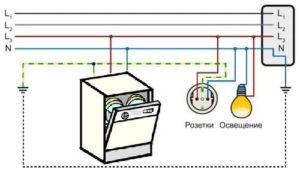 To protect your health and property, you should ground your dishwasher before using it for the first time. This step will avoid current leakage to the housing and minimize the risk of electric shock. It is only necessary to determine the presence of “ground” in the electrical wiring, check its functionality and connect the machine through the grounding wire. To do this, you can turn to the services of professional electricians or do all the electrical work yourself. If you decide to act without the help of specialists, then our instructions will help.
To protect your health and property, you should ground your dishwasher before using it for the first time. This step will avoid current leakage to the housing and minimize the risk of electric shock. It is only necessary to determine the presence of “ground” in the electrical wiring, check its functionality and connect the machine through the grounding wire. To do this, you can turn to the services of professional electricians or do all the electrical work yourself. If you decide to act without the help of specialists, then our instructions will help.
Is there “earth”?
Let us immediately note that if you lack confidence in your abilities and the proper knowledge and experience, you should not approach the electrical panel. No one can cancel safety precautions, and initiative and the desire to experiment can result in serious problems. If in doubt, contact the service department.
Now we check whether there is grounding in the house or apartment. Connecting to an already established protection is much easier than laying a new line. It won’t be difficult for experienced electricians to notice the presence of a third wire; all you need to do is: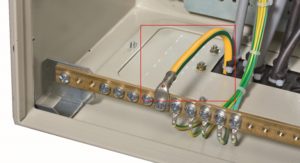
- open the general apartment panel;
- turn off the electricity supply to the apartment;
- remove the protective cover on the outlet allocated for the dishwasher;
- evaluate the connected wires. If there is no ground, then only two wires, blue and brown, will be connected to the screw terminals. “Ground” is marked in yellow-green color and is connected to a bolt located between the two main phases. This means that this outlet does not provide for this at all.
It’s worse when there is a jumper between the “zero” and the empty “ground” - this is a zero, which is fraught with many dangers for the residents of the house.
If all the wires in the socket are the same color and there are not even letter markings, then you cannot do without outside help. You will have to call an electrician who will re-label all the conductors with special equipment and tools.
Does "earth" work?
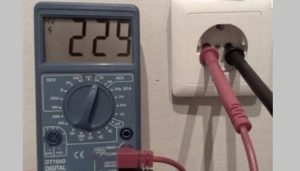 Let's say all three wires are provided, including grounding. Then you need to check whether the “ground” in a particular outlet is working properly. You can do this yourself using a multimeter, a “test lamp” or an indicator screwdriver. In the first case, we act like this.
Let's say all three wires are provided, including grounding. Then you need to check whether the “ground” in a particular outlet is working properly. You can do this yourself using a multimeter, a “test lamp” or an indicator screwdriver. In the first case, we act like this.
- We turn on the electricity supply through the panel.
- We switch the tester to voltage measurement mode.
- We insert one multimeter probe into the expected phase, and the second into zero. We write down the result.
- We move the second probe from zero to “ground” and carry out a similar measurement.
If the last measurement shows a figure almost identical to the first, then grounding in the apartment is present and fully operational. A blank display indicates the opposite - the ground wire is either missing or damaged.
If you don’t have a multimeter at hand, you can “ring” the grounding using the so-called test lamp. It is assembled from scrap materials: an ordinary “Ilyich light bulb” is taken, and two wires with limit switches that react to current are connected to its socket. You should not focus only on the color of the insulation - there is a high probability that the electrician neglected the markings or mixed up the shades. Then we proceed like this:
- we touch one end of the phase, and direct the other to zero;
- remember how hard the lamp burns;
- move the tip from zero to ground.
We compare the light received from the lamp with the first case. If it also lights up, the grounding is working properly; if there is no ignition or it is much weaker, there are problems with the grounding wire.
If during this test the RCD is triggered, then everything is in order with the grounding.
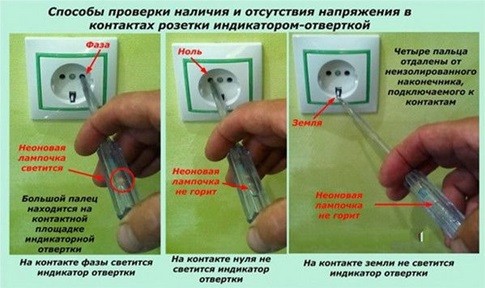
In a similar way to the lamp, the “ground” is checked using an indicator screwdriver. Let’s not forget about indirect evidence that the house is “jamming” or there is no grounding. For example, a water heater or washing machine will periodically generate electric current, and when listening to music on speakers, extraneous noise will arise.
Grounding a machine in an apartment building
Often, grounding is not provided for in old-style apartment buildings, called “Khrushchev buildings”. But you shouldn’t put up with the lack of full protection - you can ground the dishwasher in a ready-made outlet. The main thing is to adhere to the following steps.
- Find a suitable wire. A three-core copper conductor of sufficient length and a cross-section of at least 3 * 1.5 square meters is suitable. mm. or an aluminum piece with an area of one core of more than 3 * 4.5 square meters. mm.
- Connect new wiring to the general apartment electrical panel.
- Fix the wire on the corresponding walls in the house along its entire length.
- Strip the ends of each core by 2-3 cm.
- Using bolts and self-tapping screws, attach the conductor to the electrical panel frame. More precisely, to grounding - the place where most of the wires are connected.
- Move the dishwasher aside and find a place on the back panel for the ground connection.
To correctly connect the ground to the machine, you need to find a special sign on its body.We are talking about a black and yellow triangle or circle with the image of three horizontal stripes at the bottom and one vertical stripe perpendicular to them. It is next to it that it is allowed to hook the second end of the grounding wire.
Grounding the machine in a private house
Grounding a dishwasher with your own hands in a private home is a little more difficult. The difficulty is that there is no common house grounding, so it is necessary to make a grounding loop and properly bury it in the ground. But this can be done if you follow the following instructions: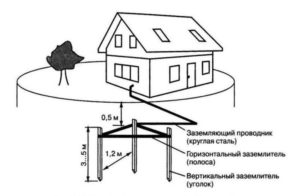
- We retreat at least 1 meter from the external wall of the house and determine the place for the future contour.
- Using a shovel, we dig a ditch 0.5-1 m deep in the form of a triangle with equal sides of 2 m.
- In each vertex of the resulting triangle we insert a metal pin - a grounding rod. Any piece of metal at least 3 m long will do.
- We put on protective seals and glasses and use a welding machine to connect all the “vertices” with a metal strip.
- We fix a terminal on one of the tops and hook up a copper wire with a cross-section of 3 * 1.5 square meters. mm or aluminum 3*4.5 sq. mm.
- We stretch the wire to the communal panel.
- We bury the structure with earth and trample it down.
You can place parts of the outline as a rectangle or one line - their location does not play a special role.
Next, we proceed in the same way with apartment grounding. We take another piece of suitable wiring and connect the grounded panel and the dishwasher together. We also focus on the special sign located on the back cover of the machine.
Some useful tips
In addition to the basic instructions, it is better to know a few more secrets and rules for organizing the grounding and operation of the dishwasher itself.If you keep them in mind, the machine will last a long time and trouble-free. So, you should remember:
- Do not use an extension cord for your dishwasher.
- Do not join copper and aluminum together.
- Do not cut the ground pin out of a three-wire wire.
- The machine is connected only to a power source of suitable power.
- If the plug of the dishwasher cord does not fit into the grooves of the socket, then the latter must be replaced with a new one.
- The use of intermediate conductors and all kinds of tees and adapters is prohibited.
- Once every six months it is necessary to tighten the grounding terminal in the panel, and once a year - directly on the circuit.
The dishwasher is powered by electricity and interacts with water, so every owner of the dishwasher must ground the dishwasher. It’s up to everyone to decide whether to do it themselves or turn to professionals, but you definitely shouldn’t neglect safety and protection from current. The main thing is not to leave this matter unfinished.
Interesting:
Reader comments
- Share your opinion - leave a comment

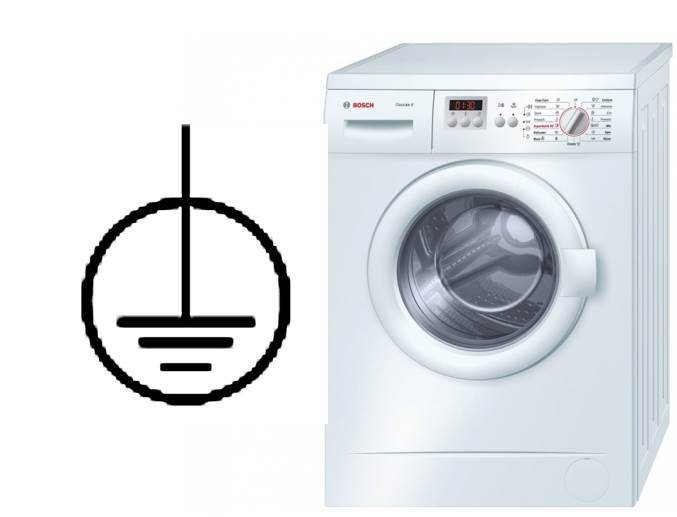
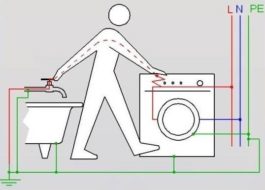

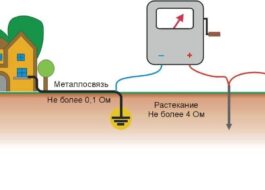
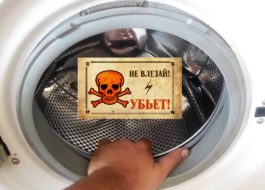
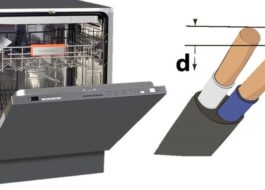














Add a comment